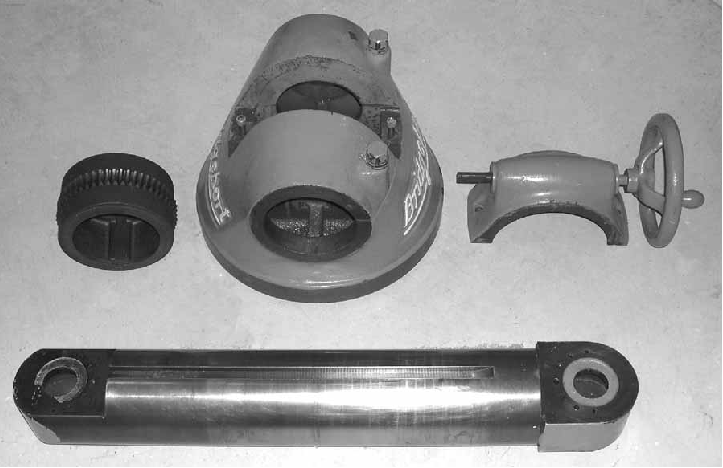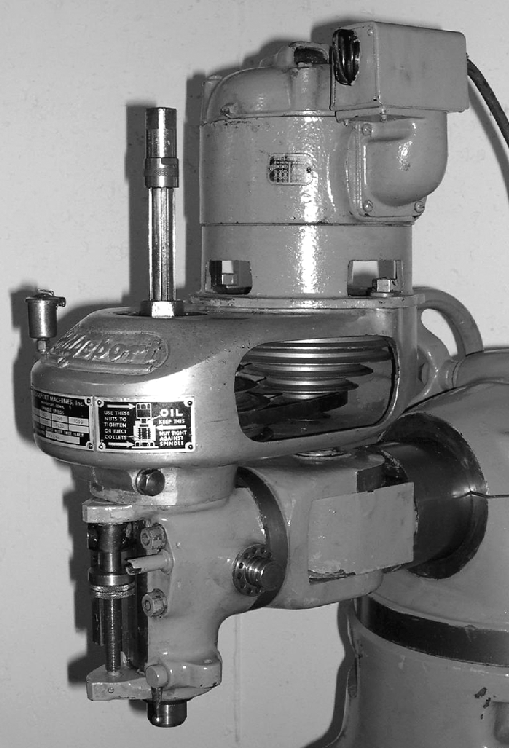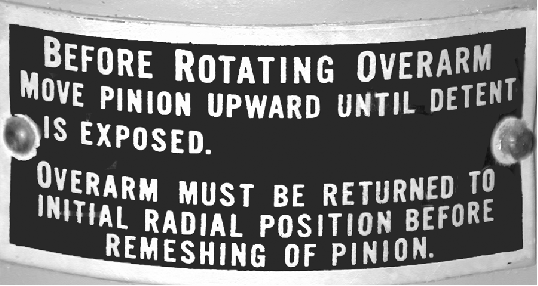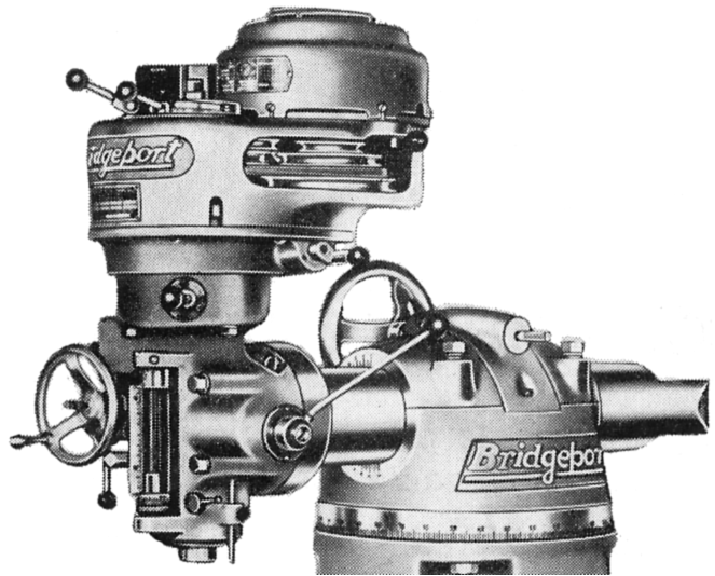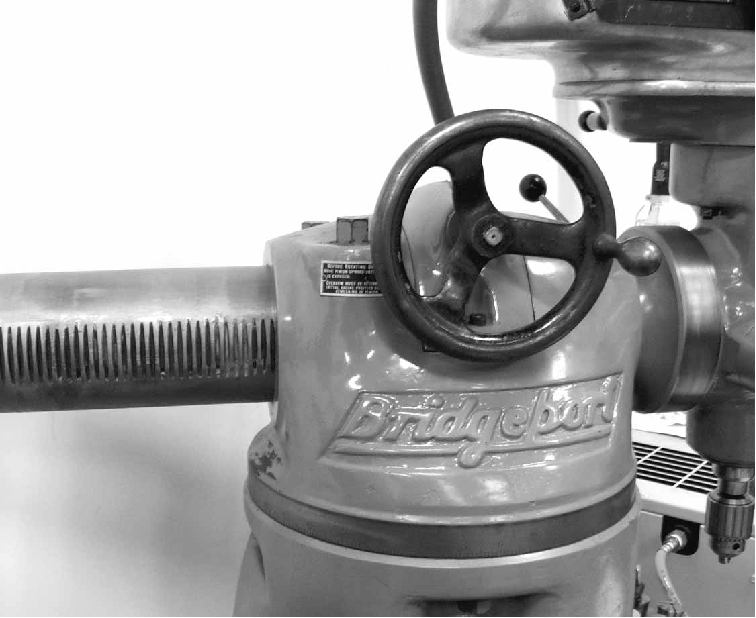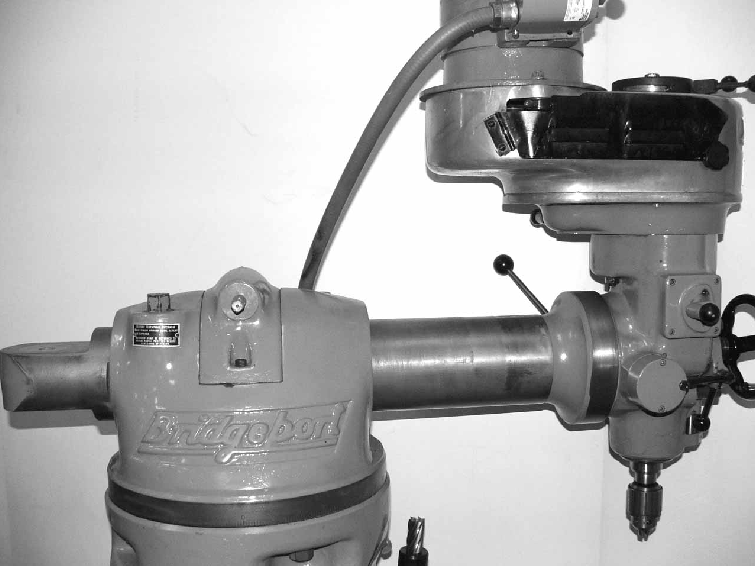|
Rather less heavily built than the later versions, the original Bridgeport turret milling machine had a lower, more slender column with a storage cupboard in its left-hand side; it also had a distinctive 5-inch diameter round ram with most having a double swivelling yoke at one to take the vertical head end a simple clevis with a round-flange attachment at the other to mount the slotting attachment. The clevis arrangement, which allowed the head to be both angled and "nodded", was fitted (on some examples at least) with "pin stops" to limit the travel to five positions at 30 degree intervals - this, in practice, enabled it to go 30 and 60 degrees off the vertical in both directions. Because the original Bridgeport was designed to carry the company's "Master Milling Attachment" the first type of "standard" Bridgeport head - which was of lighter construction than the later J Type - was known as the "M" Type. At least two designs of column top were used to carry the round ram: the earliest had the top casting split vertically on the centre line with clamping bolts going from side to side - one side being threaded the other bored as a clearance hole. The "bolts," were cross drilled and carried handles, about 8 inches long - their length being designed to safely limited the amount of torque it was possible to apply. A degree scale was engraved on both the ram and end of its housing. On the next version the ram was held within a substantial cap, split horizontally with two studs and nuts for clamping. As before part of the cap was cut away to carry a housing fitted with a cross shaft running on ball races (with a handwheel could be fitted at either end) that carried a "worm" gear that engaged with a large-diameter "wheel" (gear) surrounding the ram; the "wheel" carried a substantial key, attached by cap screws, that slid in a keyway running the length of the ram - the result of this finely-engineered assembly was that by rotating the handle (positioned half-way down the ram) the head could be made to angle over under precise control (sectional drawing at the bottom of this page). On some machines with the second type of housing (and they must be very rare), the ram could also to be driven in and out under the control of rack-and-pinion gearing. The rack was cut into the ram and the pinion, formed with a hexagon end, set vertically at the left rear of the turret and arranged so that it could be lifted out of mesh to allow head rotation.. A small spring-loaded detent pin was provided to hold the pinion in the up position and was pushed in to re-mesh the gears.
The later turret housing (if not the first) was designed by Rudolf Bannow, one of the company's founders, and granted a United States patent ( 2,275,291) on March 3, 1942 after filing (rather late in the day) on April 4th, 1939.
If you own one of these interesting early Bridgeports, or have any advertising or technical literature, pictures of mint-condition examples or know more about them, the writer would be very pleased to hear from you.
|
|




